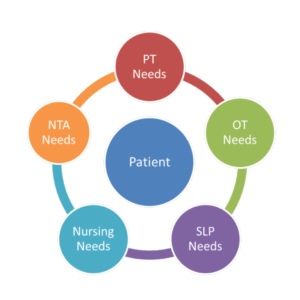The impact of ‘never events’ on post-acute care
Post-acute providers, including nursing homes, assisted living facilities and continuing care retirement communities (CCRCs) need to prepare for the impact of Medicare and Medicaid policies that prohibit payment for so-called “never events.” The current Medicare payment policy for hospital never events has created risks for unassuming post-acute providers. Recent regulations that will allow states to apply Medicaid nonpayment policies for other provider preventable conditions likewise will pose potential issues for the unwary.
Since October 2008, Medicare has not paid hospitals for certain hospital-acquired conditions (HACs) that were not present on admission. HACs are defined as conditions that are high cost or high volume or both, result in the assignment of a case to a diagnosis-related (MS-DRG) group that has a higher payment when present as a secondary diagnosis, and could reasonably have been prevented through the application of evidence-based guidelines. The Centers for Medicare & Medicaid Services (CMS) has identified ten HACs and three surgical-related events through the National Coverage Determination (NCD) process for which Medicare payments will not be made if those conditions develop during a hospital inpatient stay and were not present on admission (POA).
Under the Medicare HAC program, the critical inquiry is whether the HAC was present on admission. The question, however, is not asked at the time that a patient presents to the emergency department or is put in a room for “observation,” but instead is assessed only when the patient is admitted to the hospital as an inpatient. As most post-acute providers are aware, some hospitals are placing patients in “observation” in excess of 24 hours, a process that has spawned at least one class action lawsuit and congressional hearings. While this practice has generated concerns related to beneficiary out-of-pocket expenses and the inability of an “observation” hospital stay to qualify as a three-day hospital stay for purposes of establishing eligibility for skilled nursing home Medicare Part A coverage, few have recognized the problems created for post-acute providers under the HAC nonpayment policy.
HIGH IMPORTANCE TO POST-ACUTE PROVIDERS
While the HAC POA analysis may seem at first blush to be both empirical and objective, it is misleading because of the timeframe in which it is performed. It is important for post-acute providers to understand that the POA analysis is performed only when the patient is admitted as an inpatient. A pressure ulcer or catheter-related UTI that may have developed while a patient was in an observation bed will be coded as present on admission, but in all likelihood, the medical record will show that the patient developed the condition prior to admission. The system is designed in such a way that it is presumed that the condition developed in the place from which the patient was transferred—be that home, a nursing facility or a CCRC and not the hospital emergency department or observation bed.
Post-acute providers are advised to improve their documentation when transferring residents to a hospital. Transfer forms should include a skin assessment whenever feasible. A facility that has implemented a comprehensive wound prevention program, which identifies residents at risk for skin breakdown and provides appropriate interventions, may nonetheless find itself identified as the source of a decubitus ulcer never event that developed after transfer from the facility but prior to admission as a hospital inpatient.
There is an inherent inequity in a system that is time-sensitive yet ignores the “gap” period between when a resident leaves a nursing home and is subsequently admitted as an inpatient. The consequence of this system flaw is evident in the Office of Inspector General’s (OIG) “Work Plan for Fiscal Year 2012.” The OIG has identified HACs as a focus area for 2012. A review of the OIG HAC initiatives reveals that the focus will be on post-acute providers more than on hospitals. Consider the following:
OIG will review HACs coded as present on admission on hospital Medicare claims to determine which types of facilities, such as SNF or rehabilitation facilities, are most frequently transferring patients with certain diagnoses that were coded as being present when patients were admitted. OIG will also determine whether specific providers transferred a high number of patients to hospitals with POA diagnoses.
—OIG 2012 Work Plan, 1-4
Curiously, the review does not appear to ask whether the HACs that were coded as POA could have developed in a non-inpatient hospital setting. Indeed, the OIG will be reviewing hospitals’ use of observation services during outpatient visits only to assess the appropriateness of the services and their effect on Medicare beneficiaries’ out-of-pocket expenses for healthcare services, but not for contributing to the development of a POA condition.
The OIG 2012 Work Plan contains a related initiative that will focus on the relationship between SNFs and hospitals. This review will build upon a 2007 study in which the OIG concluded that 35 percent of hospitalizations during a SNF stay were caused by poor quality of care or unnecessary fragmentation of services. The new review will examine the extent to which Medicare residents have been hospitalized and rehospitalized and assess CMS’s oversight of nursing homes whose residents have high rates of hospitalization. The OIG’s stated rationale is that “hospitalizations and rehospitalizations are costly and may indicate quality-of-care problems at nursing homes.” Id. at 1-11.
FOCUS ON TRANSFERRED RESIDENTS
Another new investigation will focus on the quality of care and safety of beneficiaries transferred from acute care hospitals to post-acute care facilities. The OIG will evaluate the transfer process and identify rates of adverse events and preventable hospital readmissions from three post-acute settings: SNFs, inpatient rehabilitation facilities, and long-term acute care hospitals. The OIG explains its interest in this issue by noting:
Average hospital stays have fallen, resulting in increased transfers to post-acute-care facilities. Patients recovering in these facilities often require substantial clinical care, and the capabilities of the facilities to care for residents vary by facility type and access to appropriate equipment and staffing. The hospital discharge planning process and the degree of communication and collaboration between acute-care and post-acute-care providers also affect a beneficiary’s experience and the ability of providers to ensure a smooth and safe transition.
—OIG 2012 Work Plan, 1-10
With all this governmental focus on Medicare never events and hospital/post-acute care interactions, post-acute providers need to be more proactive with their partners. They must also, however, remain vigilant about similar developments under the Medicaid program. Section 2702 of the Affordable Care Act of 2010 requires CMS to issue Medicaid regulations to prohibit federal payments to states for any amounts expended for providing medical assistance for healthcare-acquired conditions in any setting, including nursing homes. Section 2702 also authorizes states to identify other provider preventable conditions for which Medicaid payments would be prohibited.
This new national policy requires states to adopt Medicaid nonpayment policies for hospitals that are at least as stringent as existing Medicare nonpayment policies for HACs that are not present on admission. Thus, post-acute providers may find themselves under similar scrutiny for their Medicaid residents who transfer to a hospital.
On June 6, 2011, CMS issued final regulations entitled, “National Policy to Prohibit Medicaid Payment for Provider Preventable Conditions,” 76 Fed.Reg. 32816. These regulations establish the framework within which states must work if they desire to establish Medicaid nonpayment policies for other provider preventable conditions. Under the new regulations, an other provider preventable conditionis a condition that occurs in any healthcare setting, including an outpatient hospital, nursing facility or ambulatory surgery center that:
● is identified in the state plan;
● has been found by the state, based upon a review of medical literature by qualified professionals, to be reasonably preventable through the application of procedures supported by evidence-based guidelines;
● has a negative consequence for the beneficiary; and
● is auditable.
Additionally, the regulations require that for an event to be an other provider preventable condition, it must otherwise result in an increase in Medicaid payment. Accordingly, any state that chooses to implement a system to deny Medicaid payments for an other provider preventable condition must have a process that can reasonably isolate for nonpayment the portion of the payment directly related to the treatment for, and related to, the condition.
Given the complexities of most state Medicaid payment systems for LTC providers, complying with these requirements will be challenging. CMS has recognized the inherent problems that may be encountered by states trying to develop such systems for nursing facilities and has required that all states obtain CMS approval through the State Plan Amendment process. CMS has also encouraged states to work very closely with affected provider groups.
The intricacies of this new regulation and its implications will be discussed in an upcoming article.
Paula G. Sanders, Esquire, is a Principal in Post & Schell’s national healthcare practice. She represents clients on both substantive and procedural aspects of health facility regulation, licensure, compliance and other issues. Sanders is also a member of the legal committees of the American Health Care Association and LeadingAge. For more information, visit www.postschell.com.
I Advance Senior Care is the industry-leading source for practical, in-depth, business-building, and resident care information for owners, executives, administrators, and directors of nursing at assisted living communities, skilled nursing facilities, post-acute facilities, and continuing care retirement communities. The I Advance Senior Care editorial team and industry experts provide market analysis, strategic direction, policy commentary, clinical best-practices, business management, and technology breakthroughs.
I Advance Senior Care is part of the Institute for the Advancement of Senior Care and published by Plain-English Health Care.
Related Articles
Topics: Articles , Facility management , Medicare/Medicaid , Regulatory Compliance









